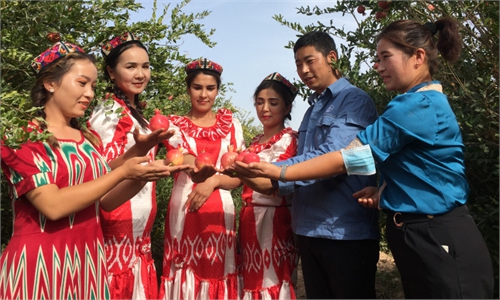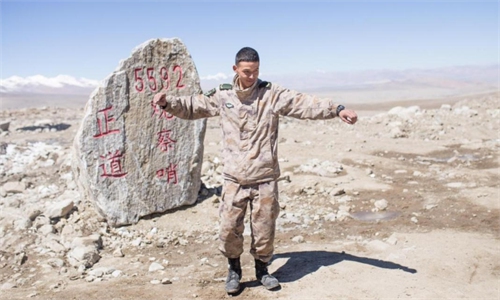IN-DEPTH / IN-DEPTH
China's 1950s generation looks back on the intertwining of their destiny and China's development, thanking the opportunities presented by the times
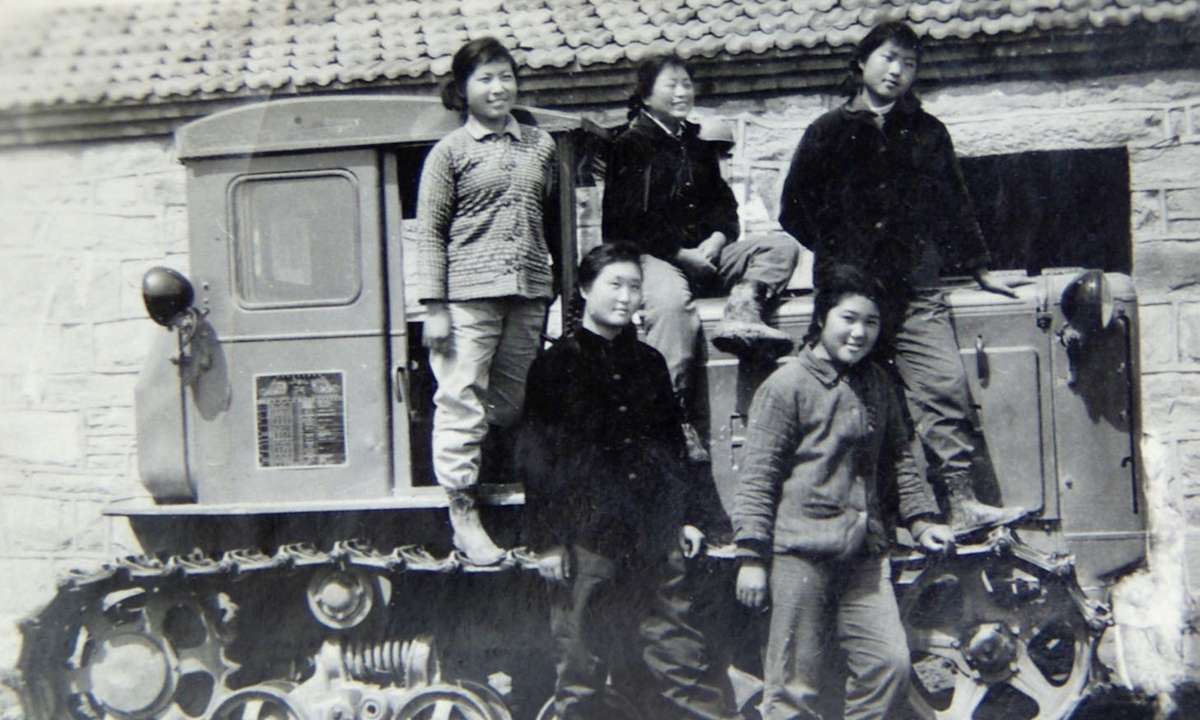
Zhiqing, or educated youth in 1970s. Photo: IC
Editor's Note:
Youth is the most active and vital force in society. The hopes of a country and the future of a nation lie in the hands of its younger generation.
Under different historic periods, the environment under which the Chinese youth have growing up, the events they have experienced, and the opportunities they were offered are also entirely different. However, what has never changed is that they have always played a vanguard role in the quest for national rejuvenation.
The State Council Information Office of China on April 21 published a white paper titled the "Youth of China in the New Era" on the occasion of the 100th anniversary of the founding of the Communist Youth League of China. "The Chinese Dream is a dream about history, the present, and the future. It is cherished by all of the people, but even more so by the young," it read.
In this vein, the Global Times recently interviewed Chinese people born in the 1950s, 1980s, and 2000s, who had varying experiences in their formative years, to illustrate the dream, the passion, and the beauty of different generations of Chinese young people.
This is the first installment.
Born in the dawn of the new China, the 1950s generation has experienced China's grand journey, from poverty to prosperity, and their destiny is also closely linked to every step of the development of their motherland.
They are the builders of the People's Republic of China who dared to challenge and endure hardship. In hard times, the post-1950s generation did their duty in all walks of life with great dedication and sacrifice to achieve development for China. With their efforts, the Chinese have stood on top of the world, and more young people had better access to a more exciting world. After witnessing China's development, they remained passionate and full of hope for the youth of today's China.
Never abandon, never give up
Unlike many vigorous young people, double amputee climber Xia Boyu, 73, was "already counting down physically and dealing with death many times" in the prime of his life.
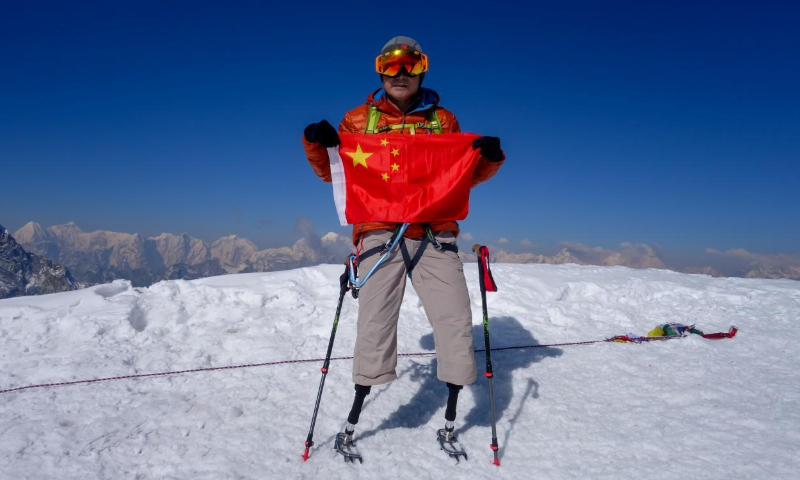
Xia Boyu displays the Chinese national flag while summiting Nepal's Island Peak in 2016. Photo: Courtesy of Xia
After Losing his legs while climbing Mount Qomolangma at the age of 26, and then failing to reach the summit four times in 43 years, he finally realized his dream at the age of 69, as the first double amputee Chinese national to reach the summit of Mount Qomolangma and the first torchbearer for the Beijing 2022 Paralympic Winter Games. Xia spent his youth and entire life practicing the belief of scaling to new heights.
In May 1975, Xia, member of the Chinese climbing team, made the first sprint to the summit of Mount Qomolangma from the north slope, set up a vital metal ladder with his teammates in an almost vertical cliff at an altitude of 8,600 meters. This has helped more than 1,300 climbers from around the world achieve their Qomolangma dreams in 33 years by the time it completed its historic mission in 2008.
"This ladder is not a metal ladder but a human ladder made of flesh and blood by the first generation of Chinese climbers," Xia told the Global Times.
But on his way to the summit, Xia gave his sleeping bag to a teammate and his lower legs suffered severe frostbite. While he lay in hospital waiting for amputation, nine of his teammates successfully reached the summit and accurately measured the elevation of Mount Qomolangma of 8,848.13 meters, which was widely recognized by the international community.
At that time, Xia was both happy for the achievement of the Chinese mountaineering team and sorry for himself. Just in his youth, was life since then without hopes?
Xia told the world with his actions that he was not defeated.
After nearly a year of depression, a foreign prosthetics expert told Xia that he could not only live like a normal person after putting on prosthetic legs, but also climb mountains again. It was these words that rekindled Xia's hope for life.
"Since then, summiting Qomolangma has become a goal of my life. I think I have to prove my value by climbing," Xia said.
To realize this dream, Xia woke up at 5 am every day and strictly trained according to the schedule. Because of too much movement after wearing the prosthesis, the sores on Xia's both legs have not healed properly for a long time.
In 1993, at the age of 47, Xia developed lymphatic cancer. "At that time, I did not know how many days I could live but I never lost faith in myself. As long as I lived one day, I would fight for my dream. As long as summiting Qomolangma did not come true, I could not just fall down. Now, more than 20 years later, my cancer has long been under control," Xia said.
Finally, on May 14, 2018, Xia challenged reaching Qomolangma for the fifth time, becoming the world's oldest double-legged amputee to successfully summit the world's highest peak.
"It is said that the unlimited scenery in the perilous peaks is amazing but I could not enjoy the scenery during the climb. As I rely on prosthetics to climb, I need to look down to see the road, I have to take every step steadily. Climbing for me is the greatest solace, to let me feel my fate in my own hands," Xia said.
Xia noted that with the development of China's comprehensive national strength, China has made great progress and breakthroughs in mountaineering.
Climbing Mount Qomolangma is much easier now than in the past and the accuracy of weather forecast or equipment update have greatly guaranteed the safety and success rate of reaching the summit, Xia said.
"But more importantly, there are generations of young people in China who are constantly striving to challenge themselves for this cause, for the Chinese ideal, to pursue new 'peaks'," Xia stressed.
On May 5, 13 members of Chinese scientific expedition team established an automatic meteorological monitoring station at an altitude of 8,830 meters, making it the world's highest station of its kind.
"Young Chinese people of different generations may have different values but their spirit of taking risks and striving for progress has not changed, which is the main driving force for China's rapid development," Xia said.
Bittersweet years
In 1970, 17-year-old Lü Chunling was sent to a farm in Heihe city, Northeast China's Heilongjiang Province, 2,600 kilometers away from his hometown Shanghai.
Including Lü, there were some 1.2 million Shanghai youngsters left their city homes for remote rural areas in the 1960s and 70s to engage in farming at the call of the country.
Those were bittersweet years for the youngsters who were known as Shanghai zhiqing (educated youth). The farm where Lü stayed, a previous prison farm, was "cold and desolate," and life there was kind of hard and boring: sowing seeds in spring, weeding the fields in summer, harvesting the crops in autumn, and making compost in winter.
"Nonetheless, even in those hard days, many of us did not give up learning and preparing ourselves for a promising future," Lü told the Global Times.
During his years working in the farm, Lü and some of his peers secretly borrowed books from each other and read them in their free time, although reading was not encouraged during the Cultural Revolution (1966-76). "The (book) resource was scarce but we tried our best to read and learn," Lü recalled.
Shanghai zhiqing began to gradually return home in 1978, two years after the end of the Cultural Revolution. Then 25-year-old Lü, who had been away from his family for eight years, embarked in a long way home following the crowds of 20-somethings.
Statistics show that nationwide about 17 million educated, urban young Chinese were sent to labor in the fields alongside local farm workers between 1968 and 78. It was called shang shan xia xiang (down to the countryside) movement.
The controversial movement disrupted the studies of some educated youths at that time and this might have changed their fates.
Fortunately, as many former zhiqing reached by the Global Times said, those who love learning and who try to better prepare themselves in various ways, either through working hard in the farm, secretly reading books and learning English or joining the army, were able to grasp the opportunities of fighting for a better future.
After returning to Shanghai, Lü worked at the city's civil administration for 35 years until retirement. Now, the 69-year-old serves as the deputy director of a local charitable foundation caring for zhiqing. The foundation has helped more than 300 zhiqing in need and their families.

Lü Chunling and his charitable foundation help zhiqing in need and their families. Photo: courtesy of Lü
"In the hard days, we seldom talked about things like 'beauty' or 'dream,' which we thought were very far away from our lives," Lü said, remarking that "now, I realize that what we chased for at that time - knowledge, jobs and better opportunities - are actually the main elements of the Chinese dream of our generation."
The Chinese dream is that, as Lü stressed, "we fight for the cause of communism and work hard for a harmonious society where everyone enjoys a happy life."
Germination of the spiritual world
For Chinese celebrated Tibetan author, Alai, the youngest recipient of the Mao Dun Literature Prize, the turning point of his fate began the moment he heard the news of the resumption of the national college entrance examinations, or gaokao, in 1977.
"I am grateful that I was able to have the opportunity to re-enter the world of knowledge in my youth," Alai told Global Times.
In 1977, the gaokao, which had been interrupted for 10 years during the Cultural Revolution, was restored with some 5.7 million people of various ages taking the examination nationwide. Since then, the values and social culture of respecting knowledge and talent have been re-established in Chinese society, and gaokao has become an important opportunity for millions of Chinese youth to break the restrictions of age, marriage, and background and reverse their fate every year.
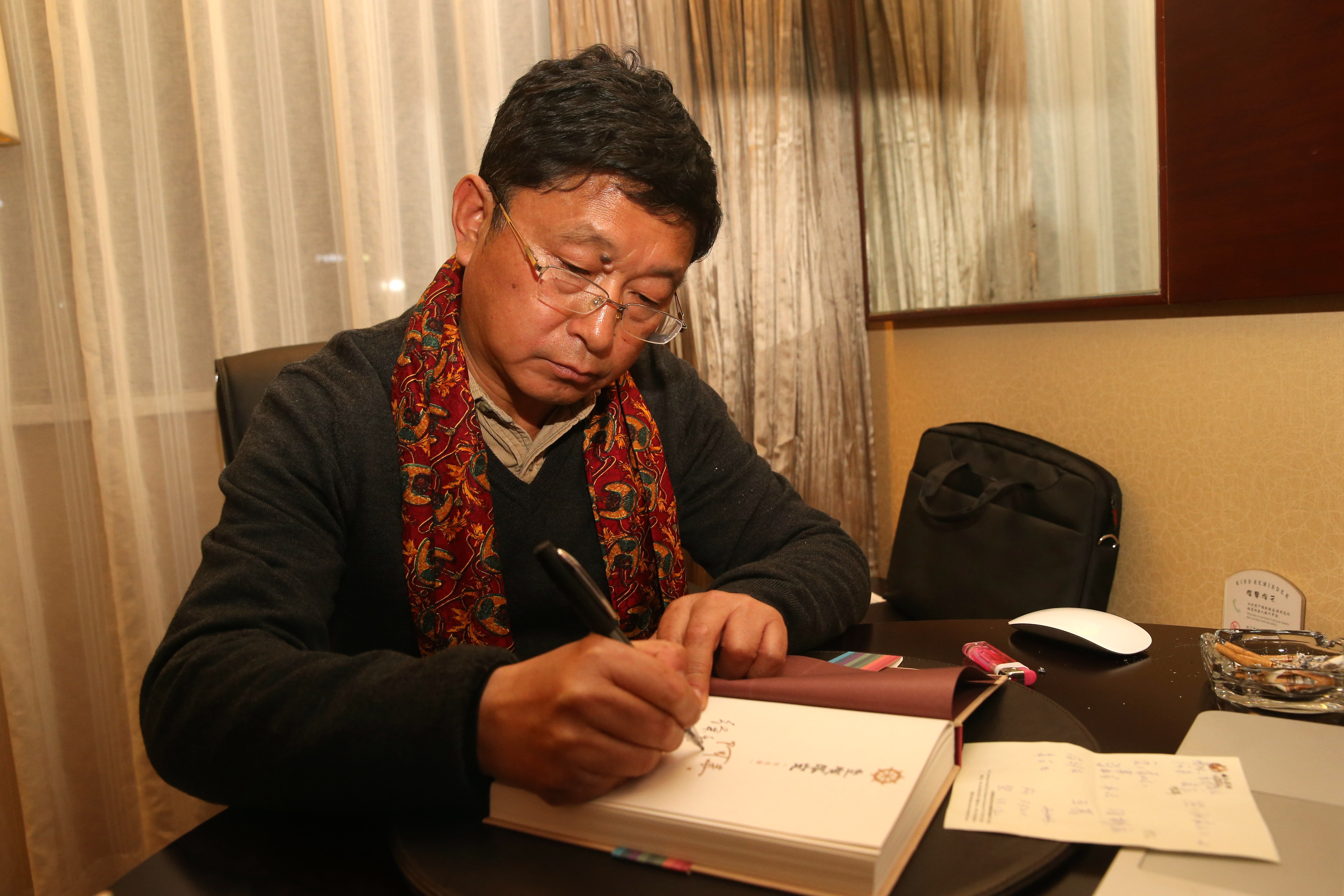
Alai signs books for readers in Xi'an, Shaanxi Province in December 2017. Photo: IC
Alai was born in 1959 in a small village with around 20 families in Barkam county, Southwest China's Sichuan Province. During his teenage years, the backwardness of culture, the poverty of life, the isolation of the environment made Alai dream of leaving his hometown. But as if determined by destiny, it seemed he could not escape by all means.
"When I was preparing for gaokao, I was already working at a construction site. After ending work at midnight, I borrowed a bicycle and a flashlight and rode all night to the downtown to take the exam. While the exam results came out, I walked an hour to the local post office every day and waited until my hopes were dashed before I got an acceptance letter," said Alai.
After entering college, Alai immersed in the ocean of knowledge and became more open-minded. After graduation he decided to reconnect with his hometown. Measuring the land of Barkam on foot and recovering the collective memory lost in folklore, he eventually "reconciled with his hometown" through his famous novel Red Poppies in 1998.
Over the years, Alai's literary works have not only focused on the unique fate and spiritual legend of the Tibetan ethnic group in Sichuan Province, but also reflected on the future destiny of his beloved land.
As stated in the white paper, the material conditions that support youth development in China have improved significantly over the past decades and the spiritual and cultural life of youth has become more colorful, Alai said, stressing that the changes that have taken place are even more obvious and profound in the Tibetan region, where the old, conservative and backward dregs of the past have been impacted by advanced culture. The Tibetan youth are stumbling but steadily building a proper cultural and national community in the process of continuous self-cognition.
"The power of education has shaped and made the youth of China," Alai pointed out.
Alai believes that the youth of each era have a different mission. "More than 100 years ago, during the New Culture Movement, a group of young writers and scholars led an unprecedented change in Chinese culture and society, and now, in the era of peace, the power of Chinese youth should not be diminished," he said.
"Everyone is an organic part of society. Young people need to have a good expectation of their country and then steadily improve themselves, be loyal to their career and pursuit, find the beauty in them, and find the 'resonance' that can influence them and their times," Alai said.
Yu Di contributed to this story

